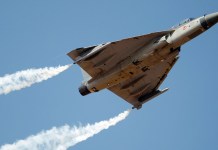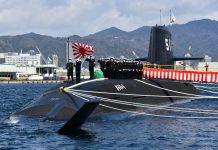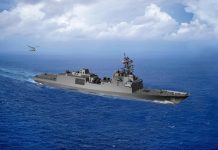The ties between India and the US is based on a shared sense of values, economic stake and a common concern about the rise of China. On paper, the relationship looks a match made in heaven, however, their strategic defence cooperation gets bulldozed by US-India differences and outlooks, writes Mu Xiaoming.
RAW, ISI Take India-Pakistan Rivalry, Proxy War To Next Level?
Much was expected to come from Donald Trump’s first-ever visit to India. New Delhi decided to buy attack helicopters and other US military equipment worth $3bn and signed three MOUs on health and energy sectors.
The two countries also announced to step up cooperation in national defence, the fight against cross-border crimes and terrorism. However, the visit just turned out to an opportunity to showcase the Modi-Trump bromance and no major agreement was announced by either side.
China Threatens To Block Medical Supplies To India After New FDI Restrictions
Mu writes that while India and USA do see eye to eye on demands related to the Indo-Pacific strategy but when it comes to taking concrete actions and policies the two countries come to a disagreement.
While both want a multi-polar Asia to deter Chinese rise, Washington wants to foster a regional security structure with the security dialogue among the US, Japan, India, and Australia at the heart. Its counterparts in New Delhi, on the other hand, seek an ASEAN-centered regional arrangement with an emphasis on economy and infrastructure.
Thank To BRO, Now Indian Army Can Be Deployed Faster Near The Chinese Border
This is not the first time New Delhi and Washington have had differences. This fundamental divergence was evident during the 2019 US-India 2+2 Ministerial Dialogue meeting among their foreign and defence ministers held in the US last December, says Mu.
At the press conference, American and Indian officials made different statements on some key issues, and US Secretary of State Pompeo admitted that the two sides were not on the same wavelength for many matters although they had held candid and open discussions about many big issues.
India and the US have tried extremely hard to build up a strong relationship in recent times. This was aimed at deeper diplomatic, defence, and security cooperation between the world’s two biggest democracies.
Mohammed bin Salman (MBS) Behind The Murder of Jamal Khashoggi: CIA
The establishment of a ministerial-level 2+2 defence and diplomatic dialogue, senior bureaucrats and military officials now meeting regularly, agreement on security dialogues such as defence technology, cybersecurity, and counterterrorism, liaisons between the Indian Navy and U.S. Naval Forces Central Command in Bahrain, signing of pending deals have contributed to a stronger relationship.
Another area which brings the Indians and Americans to crossroads is the ‘America First’ and ‘Make in India’ campaigns. Both leaders have emphasised the need to put their country first, thus making it difficult for them to take a back seat in certain issues.
Even senior officials of both countries who have said how they share a common vision and how confident they are in pushing forward their global strategic partnership believe that it cannot cover the diverging interests, writes Mu.
India Playing Double Game with China, Russia and US: Chinese Media
The US-Indian relations are at a critical juncture. With the US implementing its Indo-Pacific Strategy, which aims to promote long-term peace and prosperity for all in the Indo-Pacific, India will have a pivotal role in guaranteeing its success.
India will also try to use its geopolitical position to assert its status as a vital country in the region and maintain the power balance in Asia. The consequence of this will result in the US-India defence cooperation going from strengths to strengths but expects the endless roadblocks due to the divergence of interests and ideas.




